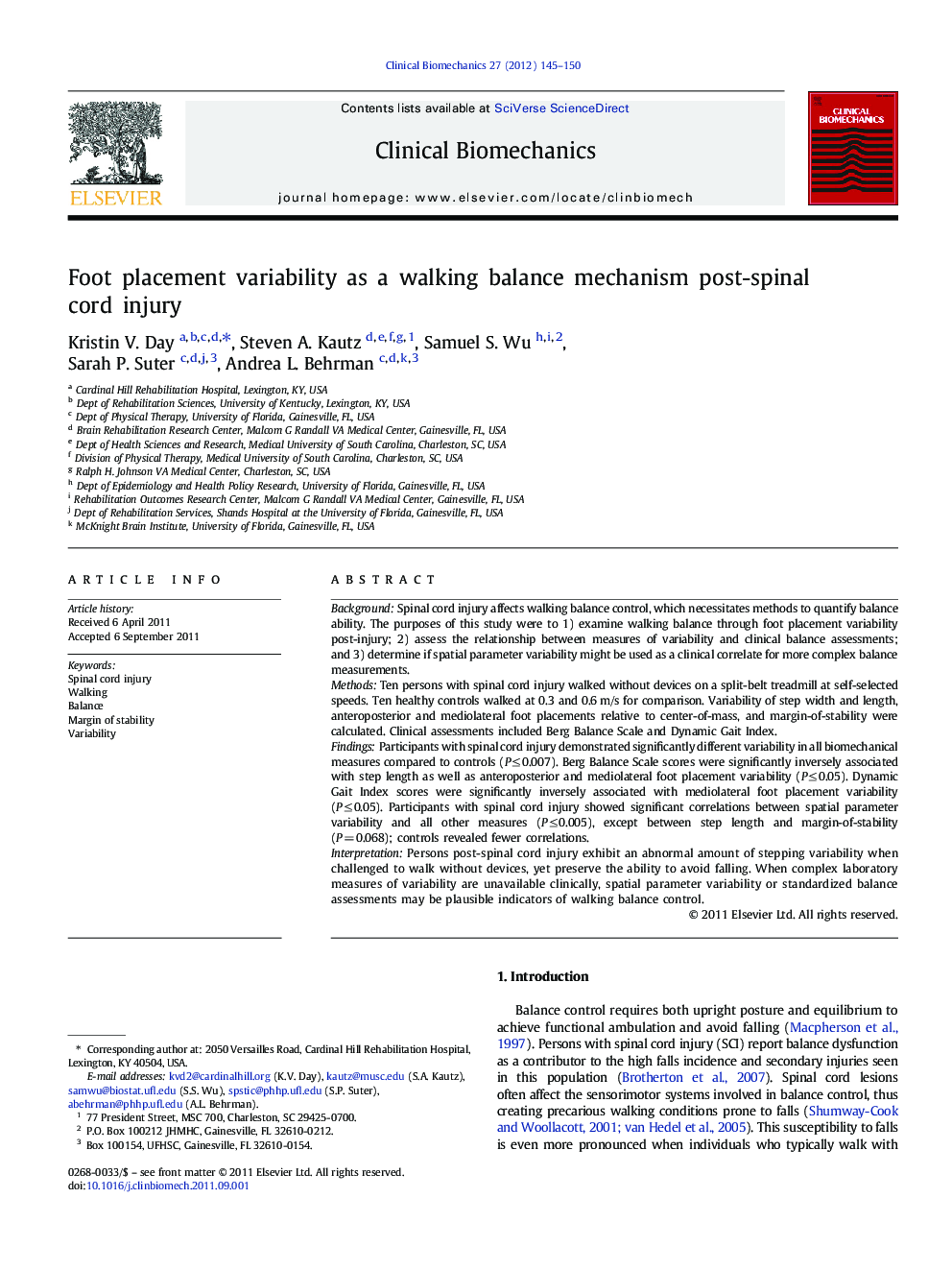| کد مقاله | کد نشریه | سال انتشار | مقاله انگلیسی | نسخه تمام متن |
|---|---|---|---|---|
| 4050471 | 1264933 | 2012 | 6 صفحه PDF | دانلود رایگان |

BackgroundSpinal cord injury affects walking balance control, which necessitates methods to quantify balance ability. The purposes of this study were to 1) examine walking balance through foot placement variability post-injury; 2) assess the relationship between measures of variability and clinical balance assessments; and 3) determine if spatial parameter variability might be used as a clinical correlate for more complex balance measurements.MethodsTen persons with spinal cord injury walked without devices on a split-belt treadmill at self-selected speeds. Ten healthy controls walked at 0.3 and 0.6 m/s for comparison. Variability of step width and length, anteroposterior and mediolateral foot placements relative to center-of-mass, and margin-of-stability were calculated. Clinical assessments included Berg Balance Scale and Dynamic Gait Index.FindingsParticipants with spinal cord injury demonstrated significantly different variability in all biomechanical measures compared to controls (P ≤ 0.007). Berg Balance Scale scores were significantly inversely associated with step length as well as anteroposterior and mediolateral foot placement variability (P ≤ 0.05). Dynamic Gait Index scores were significantly inversely associated with mediolateral foot placement variability (P ≤ 0.05). Participants with spinal cord injury showed significant correlations between spatial parameter variability and all other measures (P ≤ 0.005), except between step length and margin-of-stability (P = 0.068); controls revealed fewer correlations.InterpretationPersons post-spinal cord injury exhibit an abnormal amount of stepping variability when challenged to walk without devices, yet preserve the ability to avoid falling. When complex laboratory measures of variability are unavailable clinically, spatial parameter variability or standardized balance assessments may be plausible indicators of walking balance control.
Journal: Clinical Biomechanics - Volume 27, Issue 2, February 2012, Pages 145–150